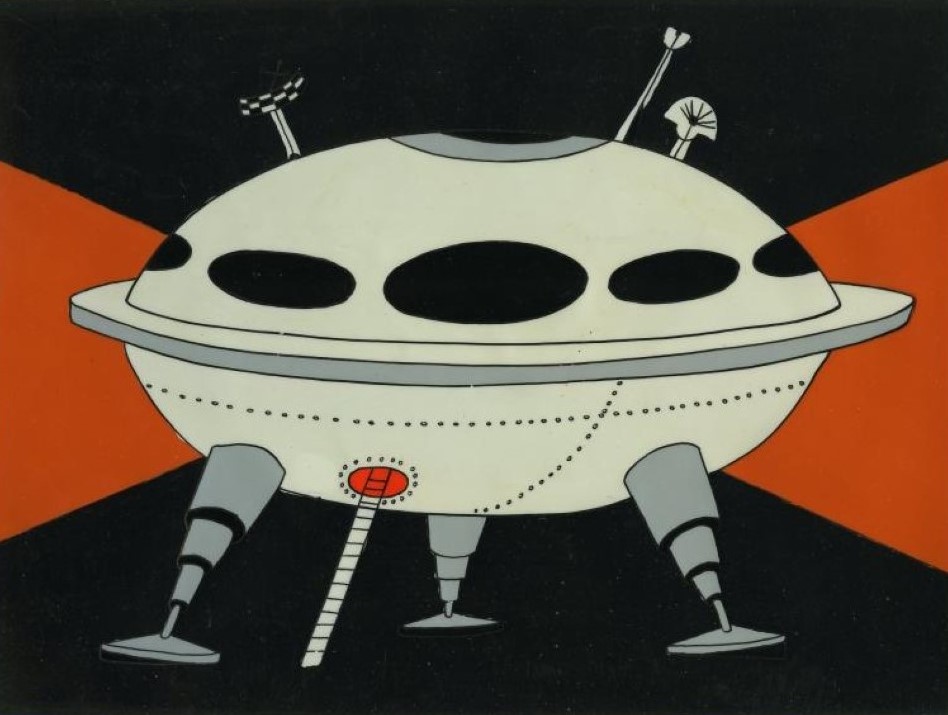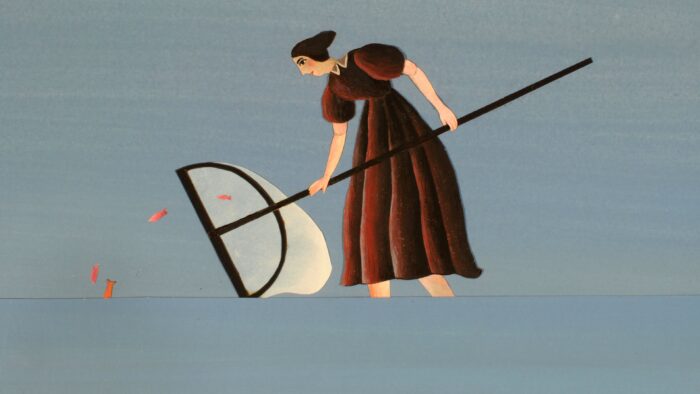Dreams can be something we desire, images we see when we’re asleep, or visions in waking life that are distinct from reality. They can seem strange or inexplicable, feature odd transformations, or simply be something we find lovely and amazing. Animation is often considered the ideal medium for expressing what can be dreamt but not seen in reality, and its aptitude for transformation and imaginative vision allows it to evoke dreams on multiplelevels. These animated dreams may fly us beyond the clouds, dive into mysterious oceans, or explore the strange corners of our minds. They can also envision the adventures of creatures or machines, using objects like yarn, pipe cleaners, and sand to transform passive matter into surprisingly vivid life. Such imaginings exist from the beginning of animation—Émile Cohl’s Fantasmagorie (1908) or Fleischer Studios’ Out of the Inkwell series, for example. But the midcentury, especially the 1970s, was the era of psychedelic visions—an expansion of consciousness that merged perfectly with animation.
 Kazimierz Urbański’s Matter (1962), produced in Warsaw, is a fitting introduction to this program, as it focuses on the strange logic and transformative power of matter—in this case, yarn. Avant-garde composer Andrzej Markowski’s eerie, atmospheric soundtrack adds to the disorientating dreaminess of the film as yarn rises like a sun, unspools, sprouts wings, and slithers into storytelling. Caroline Leaf’s The Owl Who Married a Goose (1974)—made in Montreal and based on an Inuit legend—gives us a mystical world envisioned in sand, ebbing and flowing as it tells the difficult love story of an owl and goose. Klaabu (1978) is an odd character created by Estonian artist Avo Paistik: born from a drop of water, he looks like an egg and can morph his body at will. Jean-François Laguionie’s The Lady and the Cellist (1965) melds the lyrical music of Lalo’s Cello Concerto with an undulating sea that becomes a dreamscape containing danger, magic, and love.
Kazimierz Urbański’s Matter (1962), produced in Warsaw, is a fitting introduction to this program, as it focuses on the strange logic and transformative power of matter—in this case, yarn. Avant-garde composer Andrzej Markowski’s eerie, atmospheric soundtrack adds to the disorientating dreaminess of the film as yarn rises like a sun, unspools, sprouts wings, and slithers into storytelling. Caroline Leaf’s The Owl Who Married a Goose (1974)—made in Montreal and based on an Inuit legend—gives us a mystical world envisioned in sand, ebbing and flowing as it tells the difficult love story of an owl and goose. Klaabu (1978) is an odd character created by Estonian artist Avo Paistik: born from a drop of water, he looks like an egg and can morph his body at will. Jean-François Laguionie’s The Lady and the Cellist (1965) melds the lyrical music of Lalo’s Cello Concerto with an undulating sea that becomes a dreamscape containing danger, magic, and love.
 Next, the cute revolution continues! Estonian animator Heino Pars was adept at imagining the lives of little creatures, and in Little Scooter (1962), he gives us the dreams of a small scooter lost in a dreamy, stylish Tallinn. A coming-of-age meta-narrative about film, it is an adorable tale of finding purpose in life. Estonian Aarne Ahi’s Babysitters (1975) brings to life our whimsical dreams about beloved pets, immersing us in the complex world of kitten babysitting. Even when made from simple pipe-cleaners, the expressive energy of kittens expands our sense of what can be real. Canadian animator Evelyn Lambart’s exquisitely-made film Mr. Frog Went A-Courting (1974) is like watching lacquerware come to life. The black background lends the film a fantastical quality and conjures a metaphorical world in which the promise of a beautiful dream is abruptly destroyed. Finally, two more Estonian films explore “technodelic” art. Ando Keskküla’s The Story of the Little Rabbit (1975) blends psychedelia with a capricious bunny’s reluctance to sleep, and Rein Raamat’s Flight (1973) beautifully takes to the skies as it imagines how humans might learn to fly, moving from the inspiration of a floating seed all the way into the stars.
Next, the cute revolution continues! Estonian animator Heino Pars was adept at imagining the lives of little creatures, and in Little Scooter (1962), he gives us the dreams of a small scooter lost in a dreamy, stylish Tallinn. A coming-of-age meta-narrative about film, it is an adorable tale of finding purpose in life. Estonian Aarne Ahi’s Babysitters (1975) brings to life our whimsical dreams about beloved pets, immersing us in the complex world of kitten babysitting. Even when made from simple pipe-cleaners, the expressive energy of kittens expands our sense of what can be real. Canadian animator Evelyn Lambart’s exquisitely-made film Mr. Frog Went A-Courting (1974) is like watching lacquerware come to life. The black background lends the film a fantastical quality and conjures a metaphorical world in which the promise of a beautiful dream is abruptly destroyed. Finally, two more Estonian films explore “technodelic” art. Ando Keskküla’s The Story of the Little Rabbit (1975) blends psychedelia with a capricious bunny’s reluctance to sleep, and Rein Raamat’s Flight (1973) beautifully takes to the skies as it imagines how humans might learn to fly, moving from the inspiration of a floating seed all the way into the stars.
Jennifer Barker
 MOVIES
MOVIES
Matter (Poland, 1962)
The Owl Who Married a Goose: An Eskimo Legend (Canada, 1974)
Klaabu (Estonia, 1978)
The Lady and the Cellist (France, 1965)
Little Scooter (Estonia, 1962)
Babysitters (Estonia, 1975)
Mr. Frog Went A-Courting (Kanada, 1974)
The Story of the Little Rabbit (Estonia, 1975)
Flight (Estonia, 1973)
